
Heating Variations
Heating Set Point
A part of our sensitivity analysis involved looking at the heating set points of the underfloor heating system within our model.
For the majority of the simulations and investigations carried out within this website the heating set point has been set at 19°C, based on case studies of several of schools and guidance from CIBSE guide A.
We felt it would be important and interesting to investigate how much lowering the heating set point by 2°C to 17°C would affect the overheating of the worst case scenario of an aggressive uptake of today’s computers. This, in reality, would replicate a scenario of a facility manager recognizing that the amount of computing equipment within the classroom is likely to lead to overheating. Thus the heating set point would be lowered, relying on the casual gains from the occupants and computing equipment to further heat the room.
Below are two graphs which show this theory in action. To produce these graphs, the air flow network has been dereferenced therefore allowing the temperature rise to unrealistic highs. The actual results employed the air flow network where the natural ventilation scheme providing cooling.
Graph 1 shows a heating set point of 19°C. As can be seen, the maximum temperature reached within the classroom is approximately 31°C. Comparing this to Graph 2 where the heating set point is set at 17°C, the maximum temperature experienced within the classroom is just above 29°C. This shows that lowering the set point will have an effect on the maximum temperature experienced within the classroom environment.
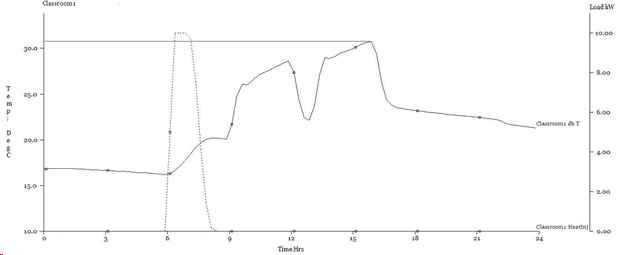
Graph 1: Heating Set Point of 19°C
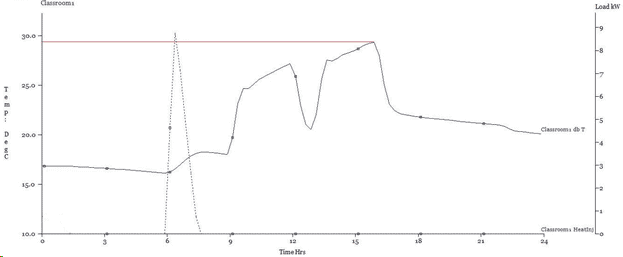
Graph 2: Heating Set Point of 17°C
Results
The results from the simulations show that lowering the heating set point by 2°C decreases the hours above 28°C by 15 hours (from 98 hours to 83 hours above 28°C). This in reality is a small decrease mainly due to the fact that most of the overheating experienced occurs during the summer time when the heating is turned off, therefore the heating set point has no impact.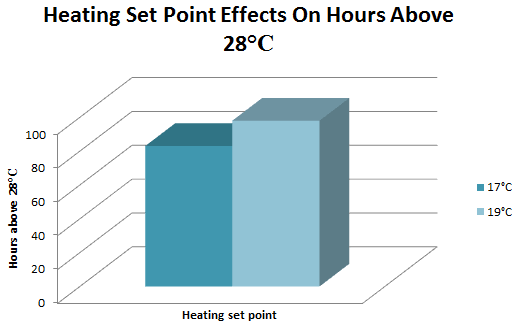
Graph 3: Lowered Heating Set Points Effects On Overheating
However looking at the effect that decreasing the heating set point to 17°C had on energy usage (Graph 4) of the plant shows that this simple change could save approximately 65 pence/m2/yr which for a school the size of our case study (12525 m2) is a cost saving of £8141.
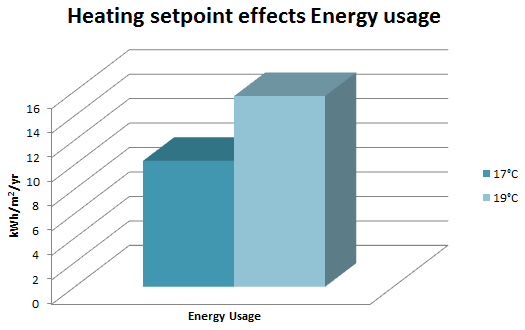
Graph 4:Lowered Heating Set Point Effect On Energy Consumption
Heating Systems
We thought that overheating may be alleviated by switching from our case study's hydronic radiant floor heating system to one that is more responsive. The thermal mass of the concrete floor inherent in underfloor systems causes a lag effect on the temperature. We modelled radiators as the alternative, which heats faster and can be turned off as the users' comfort levels are reached.
A further part of our sensitivity analysis, we undertook an investigation to show to what degree the underfloor heating system currently installed in Clydeview academy would affect the overheating experienced within the classroom as ICT usage increased and how this in turn would affect the energy usage of the classroom in terms of heating plant usage.
As underfloor heating is generally installed within the screed of a floor, overheating can occur due to the thermal mass. Stored heat continues to be released after the heating system has been shut off. This problem does not exist with a conventional radiator heating system. Radiators have the benefit of responding more quickly to changing conditions, warming faster than underfloor heating, as well as terminating production as rapidly. It was, therefore, important for this project to understand how the overheating experienced responded with the employment of a conventional radiator system.
To analyse the effect of changing the heating system, our group relocated the actuator of the system in our ESP-r model from under the floor to the east and west facing walls (See Figure 1). All other controls and set points were kept identical to the previous simulations.
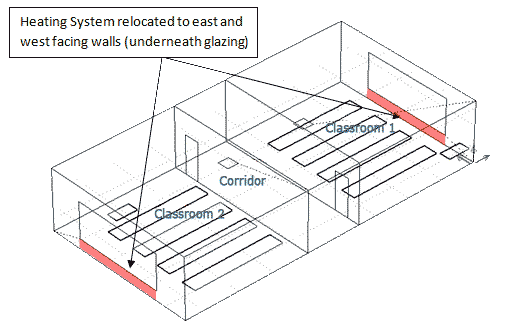
Figure 1:Radiator Heating In Model
Result
The results of our investigation can be seen in Graph 1 below. As with previous results, we have focused in on Classroom 2, as this was generally the hotter of the two classrooms within our model.As underfloor heating increases the problem of overheating within the classroom environment if an aggressive uptake of today’s computers (rated at 60 W) is adopted. This results in approximately 33 hours more overheating when compared to conventional radiators. However, other uptake levels for today’s computers and the decrease in casual gains experienced when using future and tablet devices show no or very little difference in the levels of overheating experienced. We can conclude that underfloor heating can deal effectively with moderate increases in casual gains within the classroom environment.
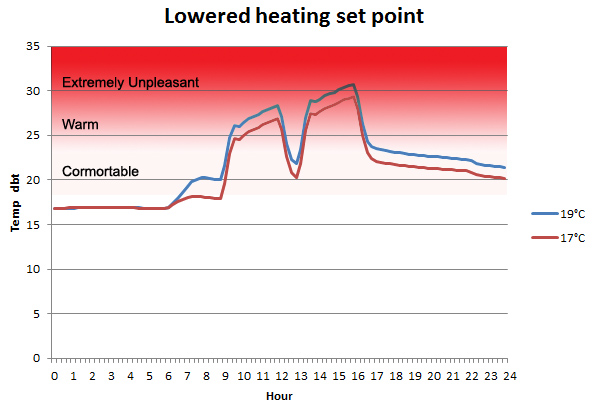
Figure 2: Comfort Effects of Heating Set Point Changes
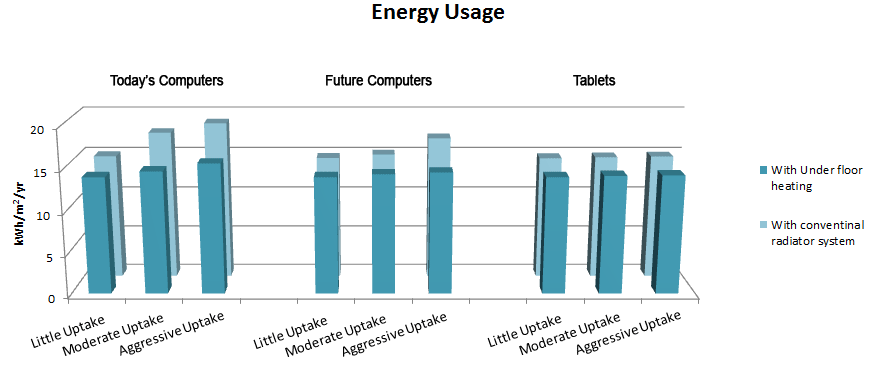
Graph 2: Energy Consumption of Underfloor Heating Compared to Radiators
In conclusion, our group would recommend the use of underfloor heating in schools should continue as the overheating caused by the use of such systems will be eradicated by use of future and tablet computers. Energy efficiency of the underfloor system will be greater than that of conventional radiators.








